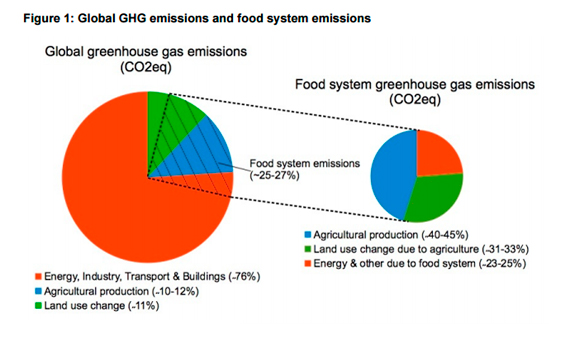In 2021 we’ll see the culmination of AGENDA 21, the United Nations plan considered the predecessor of the 2030 Agenda and the Sustainable Development Goals, which was signed in 1992 at the United Nations Conference on Environment and Development (UNCED) in Rio de Janeiro. The institutional and scientific struggle for environmental awareness and the redesign of the system of consumption and coexistence with our natural environment celebrates 29 years. And it comes at a historical moment in which taking action has been imposed as an essential requirement guaranteeing the habitability of the planet with the conditions necessary for the survival of the species that inhabit it.
Food is inevitably one of the major contributing factors and is a key area that needs reform if we want to build a sustainable existence on Earth. Which is why the United Nations Food and Agriculture Organization (FAO) has chosen sustainable production as the central issue for World Food Day 2021. Agriculture and livestock are critical for generating sufficient food to sustain the population, so it is not hard to imagine the impact these have on the environment. We also need to understand exactly why we must rethink what to eat, since it is not only essential for eradicating hunger, malnutrition, deaths from starvation or cardiovascular diseases, but because we are literally eating up the planet.
According to FAO data, each consumer wastes between 95 and 115 kg of food per year in Europe and North America, while this figure is much lower in other regions of the planet such as sub-Saharan Africa and South and Southeast Asia, where they waste between 6 to 11 kg per year.
One third of all food produced is never eaten by humans.
This far more illustrative numeric view of the problem comes from the Save Food program, an initiative aimed at eradicating food waste worldwide, bringing together governments, industry, civil society, and all other players involved in the process. Our current food trends are unsustainable. Change is required at a number of levels, driving a transformation of the values and parameters surrounding food consumption itself. Ecological rationale must be included within the logic that shapes food demand. Social awareness raising is unquestionably a key step in the process.
Furthermore, the one third of food that goes to waste generates financial losses of some $940 billion as well as 8 percent of annual greenhouse gas emissions, according to the same program. While this is our current position, forecasts point to a far darker future: the population is set to rise to 9.6 billion people by 2050.
Sustainable food = sustainable agriculture
Agricultural production must inevitably increase, if the planet is to feed a population of that size, by up to 60 percent (by 2050) according to FAO estimates. How can we develop more productive agriculture while also protecting and strengthening the ecosystem?
For the first time, the World Economic Forum 2016 Global Risks Report placed the failure to mitigate climate change at the top of its ranking, pointing to agriculture as one of the most vulnerable sectors to climate fluctuations. As well as its vulnerability to such changes, the global food system is in itself an important driver of climate change, contributing one fourth of the world’s greenhouse gas emissions (figure 1). And here is another eye-opening figure, provided by the University of Queensland: nearly 60 percent of greenhouse gases produced from food are of animal origin.

All food produced on Earth has an ecological footprint. There is an online tool that details the environmental footprint of the most common foodstuffs (rice, corn, soya…). Are all “green” foods equally sustainable? It is not enough to remove meat, animal derivatives and industrially processed foods from our diet. We need to be highly selective about what we grow. The UN gave us a hint in 2019, declaring February 10 of each year World Pulses Day, as part of its ‘Zero Hunger’ Sustainable Development Goal and for their role in the planet’s sustainability, their strategic importance in world food security, and their key nutritional benefits for achieving a healthy and balanced diet.
It is estimated that around the world some 190 million hectares of pulses help fix between five and seven million tons of nitrogen into the soil, meaning lower fertilizer requirements than most crops. Pulses thus help to support food security, reduce greenhouse gas emissions and also provide the nutrition that users need.
Find out more about pulses in this collection of infographs from the FAO to raise awareness of World Pulses Day.
Comments on this publication